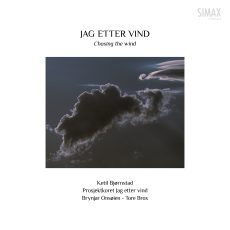Einar Steen–Nøkleberg creates a meeting of masters outside the trodden path: Arne Nordheim probes into and behind the sound of the piano – meeting ideas and processes from the last sonata of Beethoven.
Arne Nordheim
– There are many possible ways of varying the reverberation in a piano. With the help of the pedals different types of interference producing a variety of colours can be singled out. In order to get these ideas entirely under control, I had to compose Listen, a work devoted to the ebbing existence of a complex of timbres. I wanted to get behind and under the sound when I wrote this strange piece in 1971.
I intended, like my colleague Beethoven, to render these little-regarded phenomena audible and eventually accessible – in a similar way to opus 111, perhaps.
After many performances of Listen, the mechanics of the music began to reveal new timbres, and I decided to put my experience of electronic music to use. Everything the pianist plays is recorded and fed back to the pianist and the audience. Everything that is recorded via delay or timbre modulation reaches the listener’s ears and emotions once again in constantly changing strata of sound. That is how Listen – Inside Outside came into being.
Einar Steen-Nøkleberg
– From the very first moment the music appealed to my ear and to my inner self. Work on the material began in earnest, of course, with practising, devising various pedal techniques, exploring overtone effects, and interpreting fermatas. After a while it was possible to listen, and in a radio programme I said “I love Listen”.
Then Arne came up with his idea of Beethoven 111 and Inside Outside. Working on the timbres with Mats opened up further possibilities. We were on an almost psychotic high. In that state, conflicts and dramas gained new perspectives. “Inside Outside” feels unrestrainedly exposed.


















